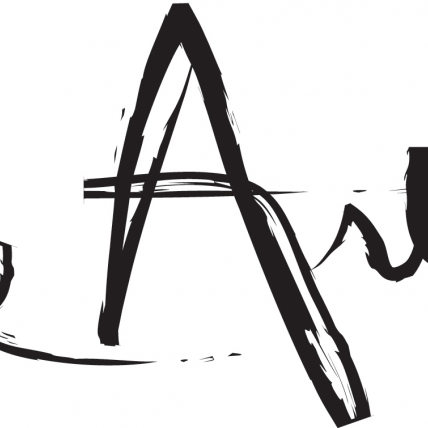Properly Insuring Fine Art Collections & The Potential Risks To Your Collections

By JoAnn Streem, Vice President, ACE Private Risk Services and Michelle Impey, Fine Arts Director, ACE Private Risk Services
As art markets draw increased attention with record-setting auction prices, wealthy individuals and families are increasingly turning to valuable collections of paintings, sculptures and other classes of fine art for investment diversification as well as aesthetic enjoyment. Christie’s reported 2014 sales of art and collectibles of $7.7 billion, the highest auction house figure in the history of the art market, once again shined a spotlight on art collections as a dynamic asset class.
But these families don't always manage the physical risks to these items with the same rigor they employ when managing financial investment risk, leading to a “blind spot” in their overall asset protection plans. Advisors have an opportunity to counteract this behavior and deepen their client relationships by helping clients understand these risks. Based on an analysis ACE Private Risk Services conducted of fine art property claims for the last two years, three risks account for 75% of all reported loss activity. Here they are:
Risk #1: Breakage
In 2013 and 2014, more than one-third (35%) of claims were due to breakage of the artwork. Nearly half of these claims were the result of the piece falling off the wall on which it was hanging, falling over or collapsing shelves. For nearly one-quarter of these breakage claims, an in-house worker, contractor or other domestic employee was at fault.
Many families display or store their art collections in ways that increase the risk of loss or damage because no one wants to think a significant loss could happen to them. Always hire professional art installers to hang works of art, and use museum-quality hardware that’s appropriate for the size and weight of each piece.
Valuables in high-traffic areas can be damaged by children and pets, so give careful consideration to the display locations. When housekeepers, nannies, contractors and other domestic staff are working in the home, be sure to explain the importance of valuable pieces and outline specific instructions on how to work around these treasured items.
Take time to have fine art professionally moved into a different room when a handyman or painter is working in the house, to ensure the protection of these items (read risk number three below). High-net-worth (HNW) market carriers often have risk consultants who can offer advice about minimizing the chance of loss, including recommendations for specialized security and safety vendors.
Risk #2: Water Damage
Nearly another quarter (22%) of ACE’s fine art claims were filed because of water damage. This includes burst pipes, leaks or roof failure. While homeowners cannot always completely control when a pipe might burst or at what point a roof might start leaking, water damage can often be prevented by taking preemptive measures. Avoid displaying a valuable art piece underneath a bathroom or water-using appliance on an upper floor. Refrain from keeping art in the basement, especially precious rugs, due to the high potential for flooding. Consider installing a system that automatically detects leaks and shuts off the water supply to minimize damage.
Risk #3: Transit
About one in five claims (18%) involved a loss that occurred while the artwork was in transit, often considered a leading cause of damage to fine art. Indeed, art collections are at significant risk when they are being shipped.
Hire only reputable companies that specialize in transporting valuable works. Certain professional art shippers are TSA certified to inspect and officially seal art during the packaging process. Trucks or vans should be temperature and humidity controlled and fitted with air ride systems that reduce the risk of damage from shocks, vibrations and sudden stops. They should also have security systems and be staffed with two drivers so the vehicle is never left unattended.
Ensure that specialized crating and packing materials are used, and check references before hiring any company to transport valuable art works.
Unfortunately, no set of safety practices can completely eliminate the potential for loss. Therefore, collectors must also make sure they have an up-to-date inventory and proper insurance in place. An inventory is the critical first step because you can’t properly insure a collection if you don’t know how much it’s worth. It can also streamline the process of settling a claim if a loss occurs.
Proper documentation typically involves photo or video records, storage of purchase receipts and, in the case of highly valuable items, expert appraisals, proofs of title, certificates of authenticity, and records of any restoration work. Moreover, values need to be regularly updated. The traditional recommendation for updating appraisals is once every three to five years, but the volatility in some art markets might require a higher frequency.
For insurance coverage, a valuables policy – also known as ‘scheduling’ – provides better protection than the personal property coverage in a homeowners policy. A valuables policy has no deductible and losses due to flood are not excluded.
Importantly, valuables policies from insurance companies that specialize in serving HNW clients offer several advantages over those based on the industry standard. In case the price of a scheduled item has unexpectedly increased during the policy term, they will often pay for its market value just prior to a covered loss up to 150% of the scheduled amount. Unlike standard industry policies, they include coverage for breakage of fragile art items, such as a glass sculpture. If one item of a pair or set is lost, damaged or stolen, they will provide reimbursement as a total loss as long as the matching items are surrendered.
In addition to superior coverage, HNW-market insurers can also offer a strong network of service providers that can help collectors avoid and recover from loss. These vendors include professional art shippers, appraisers, security experts, storage facilities, and conservation and restoration specialists – to name a few.
By working with an independent insurance agent or broker who understands the evolving needs of HNW art collectors and has access to the right carriers, advisors will be uniquely positioned to help their clients with an issue that is very close to their heart.

by
Scott Ligouri
Managing Partner

